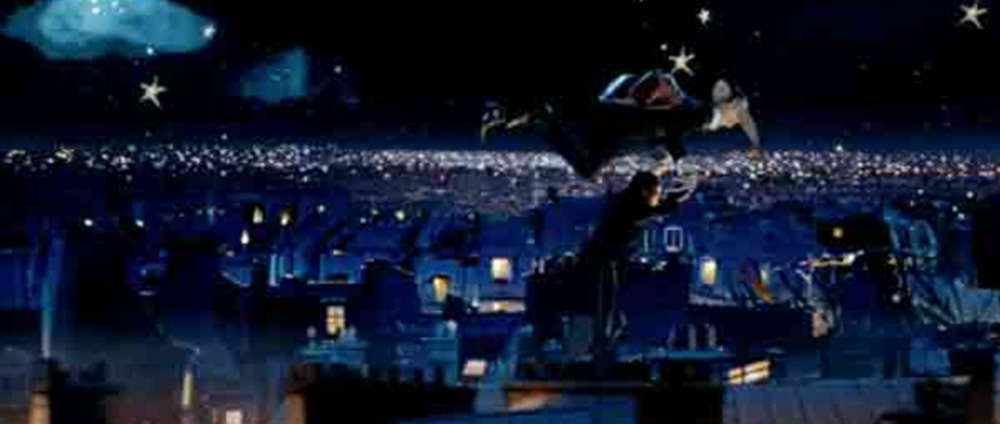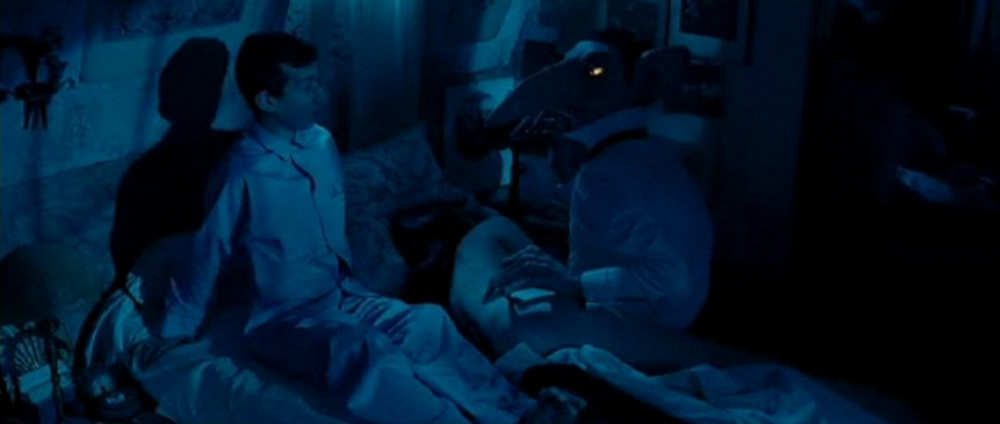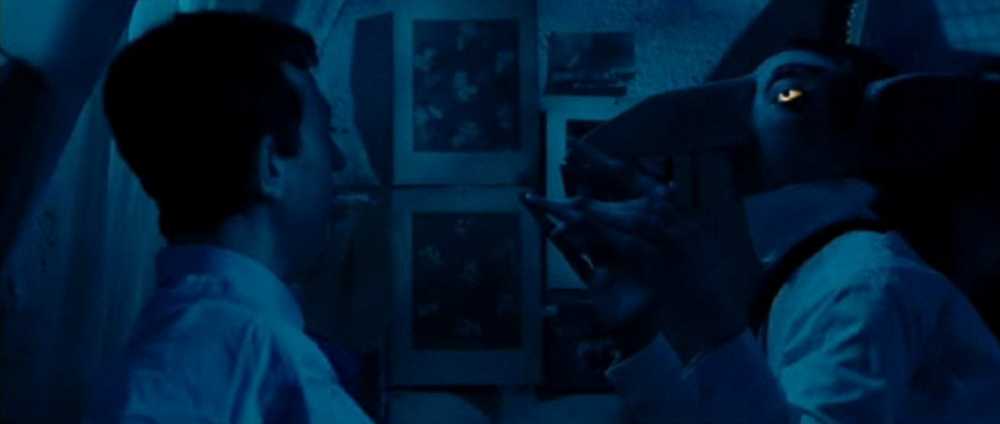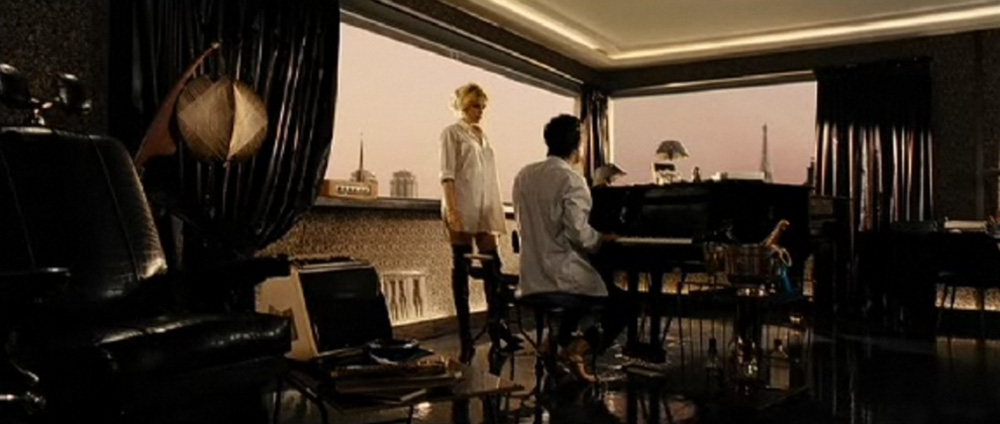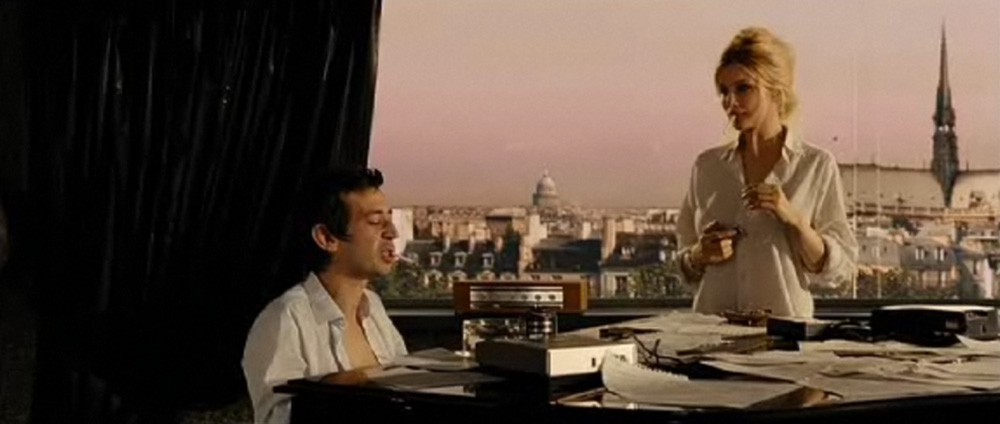Having worked as digital compositor at Mikros Image on films such as THE DALTONS, LOCKED OUT or TELL NO ONE, Cédric Fayolle becomes visual effects supervisor on PRICELESS. It since supervised several films like THE FOX AND THE CHILD, TOKYO!, THE VILLAIN.
– Hi Cédric, can you explain us your course?
After a DEUG of cinema (Aix en Provence). I was hired to Mikros Image as nodal operator in 1997. Video signal and other vectorscope had no more secret for me, but frankly I began to have an eye attractive to graphic tablets, ultimately: Edit box, and to the Henry. In brief, I become an assistant graphic designer on Quantel, in the brand new section: cinema. I then evolved at the post of 2D graphic designer and then Lead compositing. All this by learning every time new software (Domino, AfterEffect, Shake, …). In 2006, Mikros suggests me to supervising « Hors de prix » directed by Pierre Salvadori, that pleased me so I continued.
– What did you made on this film?
On » Gainsbourg, vie héroïque « , we were first consulted and foremost for the matte-painting. The director had appreciated the work of our service and his person in charge Christophe Courgeau. We discussed 2 key scenes of the film, then came to be added various compositing shots. The work for us was relatively simple, but knowing the work of Joan Sfar, we owed be artistically irreproachable in our choices.
– The director comes from the Comics world. How was your collaboration?
It is necessary to know that it was a 1st film, thus the director, been used to work alone for its comics, spoke to us in term of sensation, envy, and it was our work to interpret it in a technical way. For that purpose, we were helped by the director of photography Guillaume Shiffman, with whom I discussed a lot to determine which method was the most effective for 2 parts (shooting and postproduction).
– Coming from the world of the image, does the director had¤in mind a very precise idea of these effects in particular mattes-paintings?
Our conversation was more complex and interesting. First of all, Joann gave me as information, the feeling that he want the audience will have while watching the scene. What left us a big range of freedom. For matte-paintings, we thus gave him several concepts, and we refined the mattes little by little, to speak only about picture and about material. It was thus for every presentation a small stress, because I always had the anxiety to say myself » I hope we are not in kilometers of his vision « . But in the end, the way he explains me a scene was to be rather directive and\or explicit because we were often not very far from the final result.
– Did you use models or photos for the conception of mattes-paintings?
In fact there are in the film 2 sorts of matte-paintings. The first one is totally arises from the Comics. That’s the flight of Gainsbourg over Paris. Joann wanted something very surrealist. An artist thus built really an imaginary Paris on 3 layers (roofs in foreground, roofs in background, and sky) which we really shooted. In matte-painting, we adjusted details and new foreground, then put back the actors suspended on wires on greenscreen.
For the sequence of Bardot and Gainsbourg in the apartment, he wanted a romantic view of Paris. We thus placed the maximum of monuments in the axis, and recreate an imaginary Paris. Trying to stay in the reality. But even there, the draftsman that he is in got over it, he really want to have aplat of sky, as he would have made it in his comics. We have made a lots of version quite a lot of time, but in the end, it obtained what he wanted to see… I hope.
– Have you worked on the characters of La Gueule and La Patate?
For La Patate, we indeed work on it, because the team of DDT had no time to make the back-lit of the eyes. We have on all those shots rotoscoped the eyes and lit them.
For La Gueule, we made only a single shot, it is the one where he immolates himself with a match. The actor played the scene, put the match over the head and played as if the head was on fire. Our intervention was to bring down the match, and to make burn the head with double master passes on black screens which we had shot with a black stand-in of the head.
– How was established your team?
As the work was essentially compositing, we were a small team. There were 2 persons for the matte-painting and 3 persons for the compositing (and roto reinforcements by moment). It was very friendly, we worked with the albums of Gainsbourg as a background sound…
– How many shots did you make?
In the end, we made 150 shots. That goes from matte-painting shots, up to cleaning of the team in the reflections of dark glasses of Gainsbourg.
– What were challenges on this project?
The challenge was especially to be as high as all the technicians and the artists that worked on this project. There was a crazy concentration of talents… I was intimidated. Between the DoP, the composer, the director, … . I said myself simply « I need to be at their level ». I thus wanted that our shots are 110 % def at least.
– What was the most complex sequence ?
The Bardot’s scene. Because it is where I had most difficulties to understand the director’s intention. At the end, we have made a maximum of version: Sunset in the frame then out the frame, lens flare and without lens flare, cloudy sky, then clear sky, buildings against the light, then lit. We made for one shot, 52 versions of matte-paintings. In the end, Joann chose clear sky, building against the light, without lens flare. The goal wasn’t to attract the eye, because the object of all attention has to be Bardot and Gainsbourg singing Comic-Strip.
– What is software pipeline at Mikros?
Classic pipeline. Maya for 3D, Photoshop for matte-paintings. compositing on Nuke and AfterEffects according to the specificities of the shots and to connect all this, the coffee machine where we debrief and takes back strengths.
– Did you encounters difficulties?
As usual on all the prods. There are things which so frighten us that we prepare them completely, and in the end that goes very well. Then the things which we underestimate and that takes you very long time to achieve them. This prod rather took place serenely, and quietly, like a good reggae tube.
– How long did you work on this film?
For my personal case, it extended over 1 year. Between moment where I began the work of preparation and the delivery. The shooting was made over 8 weeks, and the postproduction of the effects took place over 3 and a half months.
– Gainsbourg (vie héroïque) is about a very important french icon. What memory do you keep of this project?
An enormous pride to have worked on this film, because it is an artist who speaks about another artist. And that the notion of tale, allows to be of advantage a tribute that a biopic. With the experience, I discovered that there was 2 cinema which I liked. The one for which I work, and who allows me to make interesting VFX, and the cinema which I like as spectator. With » Gainsbourg « , I was lucky to have both in the same film and that it is rare I had the same privilege by working on « TOKYO », where I was lucky to make the effects for Michel Gondry and Leos Carax. It is in these moments, which we tell to ourselves that we make a really very very nice profession.
– The French visual effects are in a difficult pass these time with in particular the closure of several studios like Attitude Studio. What did yout think about this situation?
The French visual effects are delicate in France, because the market is not so big, and the French producers hesitate to put money in ambitious projects. I don’t think that we can produce a film like HARRY POTTER in France, because the French film would have to be better exported to be profitable with productions of that kind. I think that for the digital artists who want to made this kind of shots, they are right to leave France for other country.
Personally, what leads me, it is the collaboration with authors. And even if I have to make only a small matte-painting, a single compositing, I am extremely satisfied to bring my knowledge to more and more curious directors and applicants of our « new » technical of manufacturings, which relieve the shootings and the budgets of productions.
– Can you tell us what will be your next project?
The end of year 2009 was rather quiet as for many. We however ended « small » effects of the next film of Olivier Baroux. And since the beginning of January, that seems to restart. In any case I read a lot of scenario, makes lots of estimate, but it is too early to speak about it.
– What are the 4 movies which has given you the passion for the cinema?
It is a very very complicated question, because there’s a lots more than 4 movies but I will try anyway.
– THE AMERICAN NIGHT (F. Truffaut): Because I had the impression to assist for the first time at the making of a film. To understand the stakes. I loved the feeling to be behind the camera with the crew.
– WILD AT HEART (D. LYNCH): I have understood this day that the inde cinema could be fun, inventive and Rock&Roll. Since I discovered many others (EASY RIDER, SCARFACE, RAGING BULL, THE BIG LEBOWSKY, …) but this film has a particular place.
– LES APPRENTIS (P. SALVADORI): Because I took a great lesson of screenwriter. I had chance and honour to work with him on « PRICELESS », and I again took a slap on the actor’s direction… A big mister, a big respect!
– BRAZIL (T.Gilliam): Because I went out of the theater by saying to me, » I have just seen a classic » and it is extremly rare, I think that this never happened at me again.
A big thanks for your time.
If you want to learn more about Cedric Fayolle, go see his website.
© Vincent Frei – The Art of VFX – 2010



